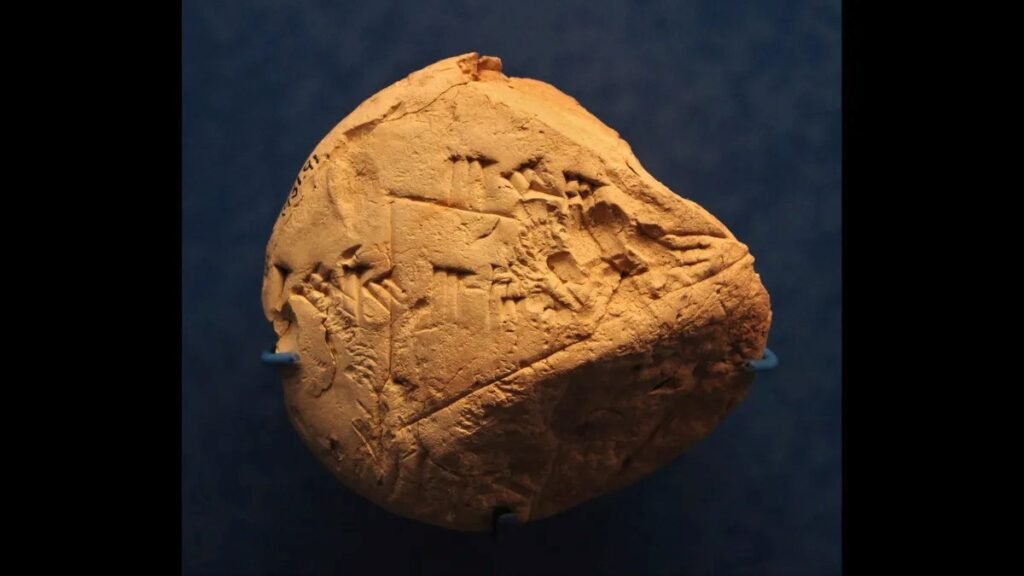A small clay tablet from the ancient city of Kish in present-day Iraq reveals a student’s miscalculation of a triangle’s area, dating back 4,000 years.
What Is It Called?
The Babylonian Geometry Homework.
What Is It?
A cuneiform mathematical tablet containing an incorrect answer.
Where Was It Found?
Tell Ingharra, Kish (Sumer), in modern-day Iraq.
When Was It Created?
During the Old Babylonian period, between 1900 and 1600 BCE.
What Does It Reveal About the Past?
Currently housed at the Ashmolean Museum of Oxford University, this round clay tablet was unearthed during archaeological excavations in Kish in 1931. It is one of roughly two dozen Babylonian math exercises discovered at the site. The tablet displays a mathematical error made by a student attempting to calculate the area of a triangle, a mistake that has remained preserved for millennia.
Measuring just 8.2 cm in diameter, the tablet contains three sets of cuneiform numbers. These numbers represent the base and height of the triangle, as well as its calculated area. The recorded height is 3.75, and the base is 1.875. According to these values, the correct area should be 3.5156. However, the student incorrectly calculated it as 3.1468.
The Rise of Mathematics Education
Kish and nearby Babylon were significant centers for early mathematical education. With the growth of large empires, the need for advanced mathematical techniques arose to manage taxation, trade, and calendar systems. Geometric and algebraic methods were essential for these purposes.
The Babylonians used a base-60 number system, which remains influential today in how we measure time (60 seconds per minute, 60 minutes per hour). Moreover, they understood the Pythagorean Theorem — stating that the square of the hypotenuse of a right triangle equals the sum of the squares of the other two sides — more than a thousand years before Pythagoras.
Cultural Shift and Knowledge Transmission
Errors like this one reflect the shift from oral to written knowledge transmission, a significant cultural transformation. This transition began around 3500 BCE in Kish, similar to the modern move from paper records to digital data storage.
Source: This article is adapted from the original report on Live Science: https://www.livescience.com/archaeology/babylonian-tablet-preserves-students-4-000-year-old-geometry-mistake





